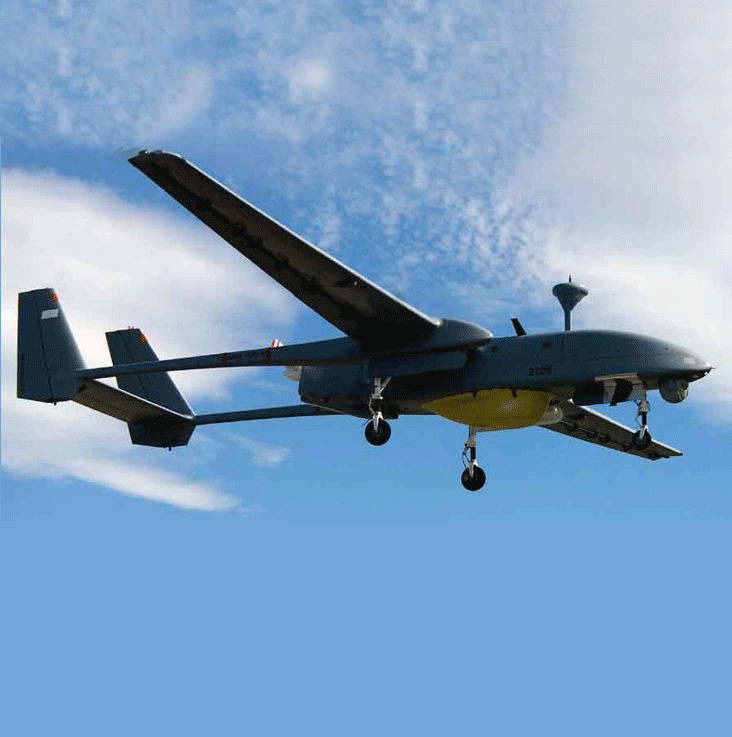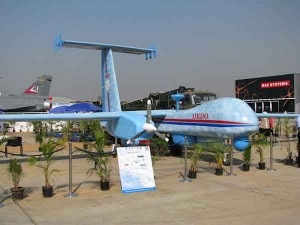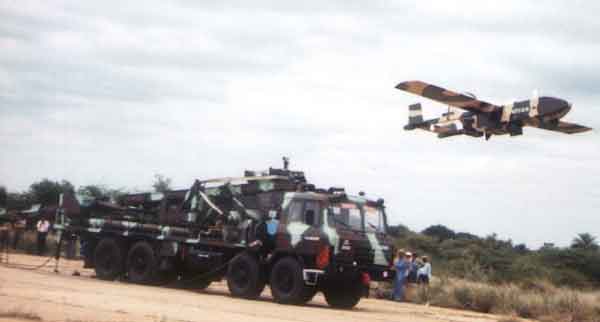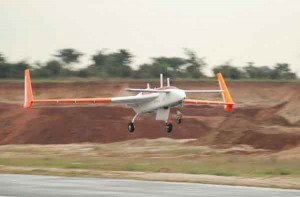Drones are on the rise in the Indian armed forces. Identified as an essential tool for modernization, in recent years UAVs have become a staple of Indian border surveillance. Constrained for a long time by the limits of defense industry expertise and by chronic delays of Defence Research and Development Organisation (DRDO) projects, India was initially forced to import off-the-shelf models.
In 1996, New Delhi began operating Searcher and MALE UAVs bought through Israel Aeronautics Industries (IAI), as well as Searcher II since 2000, and Heron since 2001, also designed by IAI. The armed forces now have around a hundred Searcher II and sixty Heron. However, recognizing the limitations of the off-the-shelf purchases, and concerned about developments in China and Pakistan, the Ministry of Defence launched an offensive strategy to develop an indigenous industry by establishing institutions dedicated to UAV technology, under the guidance of DRDO. But these projects, guided by the sacrosanct principle of self-sufficiency (self-reliance), have still to attract more than a weak private sector participation.
A specific “drones” unit will soon be established in the Indian Air Force (IAF), at the request of Indian CEMAA. There will be a limited number of future UAV squadrons, so that the IAF can allocate a sufficient number of trained personnel to each.
The Aeronautical Development Establishment (ADE) of DRDO has developed a broad spectrum of knowledge on UAV subsystems technologies, including aerodynamic design, composite materials, telemetry, propulsion (jet engine design PTAE7), flight control software, actuators and sensors. On these programs, ADE has several partners including the giant Defence Public Sector Undertakings (DPSU) groups Hindustan Aeronautics Limited, Bharat Electronics Limited and Bharat Dynamics Limited.
The creation of a “drones” unit
A specific “drones” unit will soon be established in the Indian Air Force (IAF), at the request of Indian CEMAA. There will be a limited number of future UAV squadrons, so that the IAF can allocate a sufficient number of trained personnel to each. Drone operators were previously airmen who had been excluded from the pilot training for medical reasons. Their numbers have been declining steadily, mainly because of advances in medical care. Therefore, it was necessary to review the entire recruitment process and create a real drones unit in the heart of the IAF. The question is whether the Ministry of Defence will agree to fund the additional staff, or if the IAF will have to dip into its ranks at the expense of other units.
In addition, the DRDO plans to set up a testing center dedicated to UAVs in Chitradurga, near Bangalore in Karnataka.
From surveillance to counter-insurgency
In operational terms, the priority in terms of UAV requirements is border surveillance missions, and most units in operation are assigned to these missions. Heron and Searcher II are deployed along national borders, particularly those shared with China and Pakistan. Around ten Heron drones are currently deployed in northern Kashmir where they constantly monitor the Line of Control (LoC) separating Indian and Pakistani Kashmir. It is worth noting that the Searcher II and Heron, both of which have relatively high light ceilings (18,500 and 30,000 feet respectively), are particularly suitable for operations in the mountainous regions of the Himalayas. It is this quality that made the difference with competing drones in tests performed at altitude.
During a recent operation conducted by the security forces, images taken by the Israeli drone on what was supposed to be a Maoist training camp ultimately proved misleading, as it was in reality only a village.
In 2010, several violations of Indian airspace were reported in the Himalayas, notably in Kashmir, by Chinese and Pakistani drones. One hundred Israeli Searcher II UAVs are now operating along the east, west and north borders. In addition, several drones are being deployed in the particularly sensitive area of Sir Creek marshland separating the Sindh region (Pakistan) and Gujarat (India).
The Indian Navy uses UAVs for maritime surveillance (traffic control, EEZ protection, fight against terrorism and piracy). It has a dozen drones at its disposal, mainly Heron and Searcher II. The first squadron, INAS 343, was established in 2006 in the Kochi (Kerala) naval base. Recently, a second squadron of drones, INAS 343, came into operational service in the Indian Navy. Based at Porbandar (Gujarat), it has two Searcher II and two Heron. A new squadron will shortly be established in Tamil Nadu. India has developed a unique competency operating UAVs in the tropics where there is a lot of rainfall. The navy’s Searcher II and Heron UAVs played an important role in the rescue operations for the 2008 tsunami. They allowed for the detection of survivors and bodies off the coast of the Andaman and Nicobar islands (Bay of Bengal), better guiding the SAR helicopters. The DRDO is developing with the Israeli IAI a naval drone with a rotary wing (NRUAV), for a budget of 1163 crores. It will be dedicated to SRI operations from the IN warships.
For counterinsurgency operations against the Maoist Naxalite rebels, UAVs have recently been used by security forces, mainly the Border Security Force (BSF) and Central Reserve Police Force (CRPF). They operate in tandem with the Mi-17 armored helicopters, allowing police to quickly deploy their forces to targeted areas identified by the drone. However, the Heron have shown to be limited in surveillance operations in the jungles of Chhatisgarh, Jharkhand and Bihar. During a recent operation conducted by the security forces, images taken by the Israeli drone on what was supposed to be a Maoist training camp ultimately proved misleading, as it was in reality only a village. The error was compounded by the fact that forces were dropped by mistake in the middle of a Naxalite zone, which the drone had not seen. The infrared optical radar SAR of the Heron is effective in clear weather, but struggles to pierce thick cloud cover or jungle foliage. The Netra, a portable drone weighing 1.5 kg on takeoff and vertical landing, is being developed in Ideaforge Technology Pvt Ltd and DRDO laboratories.
The DRDO is already working on Rustom H, a MALE comparable to the U.S. MQ-9 Reaper, which can fly for 24 hours. The Rustom UAV will gradually replace the Heron in service with the air force and navy.
The Border Security Force (BSF) and Central Reserve Police Force (CRPF) are interested in such a drone precisely for such missions. Featuring a high resolution camera, it will be able to operate for 30 min in a radius of 1.5 km.
First Indian achievements in drone manufacture
The ADE is already has several UAVs, either in military service or about to be. With a battery life of 4 hours and a weight of 380 kg, the MALE Nishant UAV,is gradually entering into service with the Indian Army, where it will be used for targeting, reconnaissance, SIGINT and ELINT missions or battle assessment damage.
The Lakshya (“target” in Sanskrit) is a moving target of the Indian Air Force for missile firing training. Powered by the turbojet PTEA HAL-7, it can operate at speeds of 300km / h for up to 45 minutes. Around fifty Lakshya are on order. The successor, Lakshya II, will be able to simulate anti-ship and cruise missile attacks, flying at 700 km / h at very low altitude.
The ADE is also developing an unmanned solar powered drone capable of flying for 15 hours in succession, for which it is looking for foreign partnerships. It also has several projects for micro and mini UAVs, like the Slybird.
The main DRDO program is the Rustom MALE UAV, recently exhibited at the Singapore Airshow. With a 20 m wingspan, it can fly fifteen hours at 35,000 feet. The radar and optics should be of Israeli origin, as well as the engine, which can also be bought off-the-shelf from foreign suppliers. It has just completed its eighth flight in December, reaching an altitude of 6,000 feet. The DRDO is already working on Rustom H, a MALE comparable to the U.S. MQ-9 Reaper, which can fly for 24 hours.
The Rustom UAV will gradually replace the Heron in service with the air force and navy.
Interest for UCAVs
In 2011, India announced that it wanted to develop combat drones (UCAVs), beginning by arming the future Rustom H (Rustom version C), then through the discrete stealth drone “AURA” project, for which the DRDO’s ADE estimates design time of seven years. Following the announcement of its selection of the Rafale fighter aircraft, several sources have indicated India’s interest in Dassault Aviation’s NEuron project. One reason could be that the DRDO is lacking in stealth and automatic takeoff-landing technologies. The future Indian UCAV will be configured in “flying wing”, which can operate up to 30,000 feet, and will be fitted with advanced avionics (IFF, radar fire control …).








